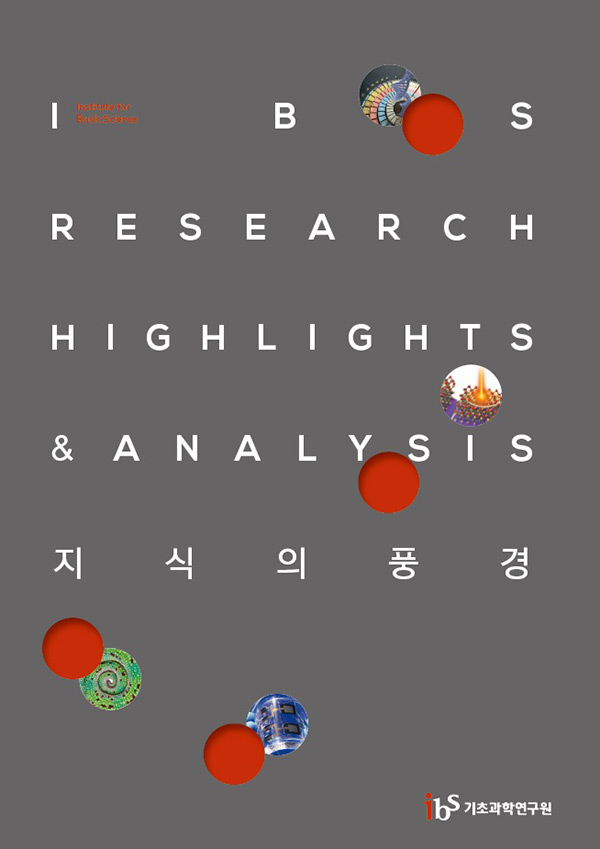주메뉴
- About IBS 연구원소개
-
Research Centers
연구단소개
- Research Outcomes
- Mathematics
- Physics
- Center for Theoretical Physics of the Universe(Particle Theory and Cosmology Group)
- Center for Theoretical Physics of the Universe(Cosmology, Gravity and Astroparticle Physics Group)
- Center for Exotic Nuclear Studies
- Center for Artificial Low Dimensional Electronic Systems
- Center for Underground Physics
- Center for Axion and Precision Physics Research
- Center for Theoretical Physics of Complex Systems
- Center for Quantum Nanoscience
- Center for Van der Waals Quantum Solids
- Chemistry
- Life Sciences
- Earth Science
- Interdisciplinary
- Center for Neuroscience Imaging Research(Neuro Technology Group)
- Center for Neuroscience Imaging Research(Cognitive and Computational Neuroscience Group)
- Center for Algorithmic and Robotized Synthesis
- Center for Genome Engineering
- Center for Nanomedicine
- Center for Biomolecular and Cellular Structure
- Center for 2D Quantum Heterostructures
- Center for Quantum Conversion Research
- Institutes
- Korea Virus Research Institute
- News Center 뉴스 센터
- Career 인재초빙
- Living in Korea IBS School-UST
- IBS School 윤리경영


주메뉴
- About IBS
-
Research Centers
- Research Outcomes
- Mathematics
- Physics
- Center for Theoretical Physics of the Universe(Particle Theory and Cosmology Group)
- Center for Theoretical Physics of the Universe(Cosmology, Gravity and Astroparticle Physics Group)
- Center for Exotic Nuclear Studies
- Center for Artificial Low Dimensional Electronic Systems
- Center for Underground Physics
- Center for Axion and Precision Physics Research
- Center for Theoretical Physics of Complex Systems
- Center for Quantum Nanoscience
- Center for Van der Waals Quantum Solids
- Chemistry
- Life Sciences
- Earth Science
- Interdisciplinary
- Center for Neuroscience Imaging Research(Neuro Technology Group)
- Center for Neuroscience Imaging Research(Cognitive and Computational Neuroscience Group)
- Center for Algorithmic and Robotized Synthesis
- Center for Genome Engineering
- Center for Nanomedicine
- Center for Biomolecular and Cellular Structure
- Center for 2D Quantum Heterostructures
- Center for Quantum Conversion Research
- Institutes
- Korea Virus Research Institute
- News Center
- Career
- Living in Korea
- IBS School
News Center
| Title | IBS Research Highlights & Analysis Published | ||||
|---|---|---|---|---|---|
| Name | Department of Communications | Registration Date | 2016-12-15 | Hits | 4299 |
| att. |
 thumb.jpg
thumb.jpg
|
||||
IBS Research Highlights & Analysis Published
In celebration of its 5th anniversary, IBS has published IBS Research Highlights & Analysis, a compilation of complete reports on the findings of research projects conducted by IBS Research Centers. The report is comprised of two parts: (1) Research Highlights 25; and (2) Research Analysis. IBS has selected 25 best research findings in consultation with IBS research advisors. Among the 25 selection, highlights vary from the fundamental research that serves as a breakthrough for relevant research topics and to findings that can be applicable to clinical treatments for diseases: a method to sequence the very end of mRNA molecules that may discover unforeseen features of RNA cleavage and tailing; a wearable electronic skin to monitor and control blood sugar levels, based on graphene synthesized through a chemical vapor deposition (CVD) process; and the real-time observation of chemical bonding on an atomic level. The report used features such as graphics and images to illustrate the concept and significance of concerned research findings. IBS President KIM Doochul noted, "The 25 highlights, among a number of research findings from 26 Centers, are the best of the best research results that IBS researchers' scientific curiosity has produced. We are witnessing the increase of interdisciplinary research that transcends fields of study. " The Research Analysis indicates that IBS has achieved the excellence of research based on Thomson Reuters data: IBS' HCP (Highly Cited Papers) was 5. 29%, higher than that of MPI and RIKEN; and its CNCI (Category Normalized Citation Impact)* doubled the world's average despite the relatively small number of papers compared to other global research institutions. The English issue of the IBS Research Highlights & Analysis will be published in the mid of February 2017. * The Category Normalized Citation Impact (CNCI) of a document is calculated by dividing the actual count of citing items by the expected citation rate for documents with the same document type, year of publication and subject area. |
|||||
| Next | |
|---|---|
| before |
- Content Manager
- Public Relations Team : Yim Ji Yeob 042-878-8173
- Last Update 2023-11-28 14:20












